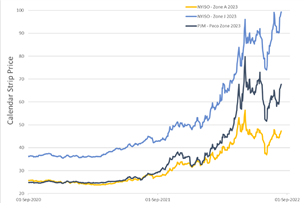Smartest Insight | Issue 93

Our weekly company round-up covers the key market and industry news in one place, so you don’t have to look any further to stay ahead.
September 9, 2022
Market Update:
Gas futures continued their decline earlier this week as the market digested an EPA reinstated pollution rule potentially impacting the Cheniere LNG export facility. The decision impacts the turbines at Cheniere’s LNG export facilities. Cheniere stated that while it disagrees with the ruling it does not expect any impact on LNG export volumes but will result in additional costs. The company has 62 affected gas turbines at its facilities that had national emission limit waivers over the past 18 years. Prices were already softer prior to the EPA release. The October contract’s loss of nearly $1.50 in three days erases most of the gain over the last three weeks. Fundamentals have shifted bearish and continued volatility is likely.
Domestic production has increased about 1 Bcf in September and is approaching the highs last seen in late 2021. On the weather front temperatures have moderated easing demand. In Europe, the continued talks of prices caps combined with on-track storage inventories have outweighed Nord Stream pipeline supply concerns but the focus will shift to Q1 2023 as Europe will not be able to adequately supply gas demand simply off of storage during a normal winter.

PJM UPDATES CAPACITY MARKET DEMAND CURVE
On September 2, 2022, PJM announced that its board has approved capacity market demand curve parameters as required by its Quadrennial Review process. Every four years, PJM has an opportunity to revisit the parameters of the demand curve used for its capacity market auctions, the purpose of which is to ensure that these auctions procure enough capacity volumes to meet PJM’s reserve requirements. The key variables approved by the board are:
The net Cost Of New Entry (“CONE”), which is essentially the revenue requirement needed to incent the installation of new power generation equipment, is an important component of the demand curve. PJM’s board approved the use of a combined-cycle gas-fired power plant to determine CONE, which is a change from PJM’s current process which uses a single combustion turbine to determine CONE. In combined cycle, a combustion turbine is paired with a steam turbine to improve efficiency, albeit at a high capital cost.
The PJM board also recommended use of forwardlooking energy and ancillary service revenue methodology. PJM models these revenues which offset the CONE to determine the capacity price needed to incent the installation of new power generation.
PJM plans to file the results of the quadrennial review with the Federal Energy Regulatory Commission (“FERC”) by Oct. 1 and expects approval in time for its next capacity market auction in December.
NEW ENGLAND STATES SEEK FEDERAL FUNDS FOR OFFSHORE TRANSMISSION
Connecticut, Massachusetts, Maine, New Hampshire and Rhode Island are working together in an attempt to access federal funds for transmission infrastructure needed to accept production from offshore wind. On September 1, 2022, the states issued a “request for comment” on how best to request funding under the Infrastructure Investment and Jobs Act, which became law in 2021 and provides up to $5 billion in funding for new transmission projects. These New England States have already signed long term contracts for more than 5,000MW of offshore wind projects that will come on-line over the next several years, beginning in 2023. Any federal funding received will offset the costs that will be charged to electricity suppliers and ultimately passed on to customers.
TEXAS WEATHERIZATION RULE
On August 30, 2022, the Texas Railroad Commission enacted a new weatherization rule affecting certain Texas natural gas market participants. The rule was required by Senate Bill 3, a law passed in 2021 in response to winter storm Uri, which caused rolling blackouts in Texas in February 2021. The new rule will require certain production and pipeline facilities that have been designated as “critical infrastructure” to institute new procedures regarding emergency preparedness. Natural gas companies that fail to perform the mandatory weatherization work could face penalties of up to $1 million.
